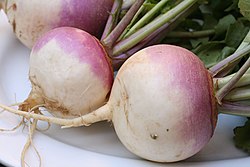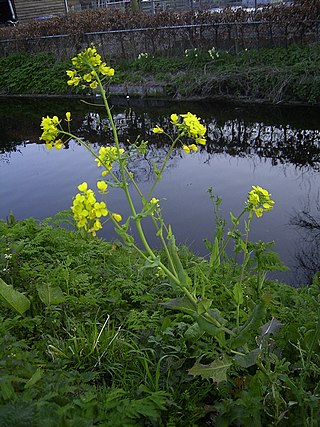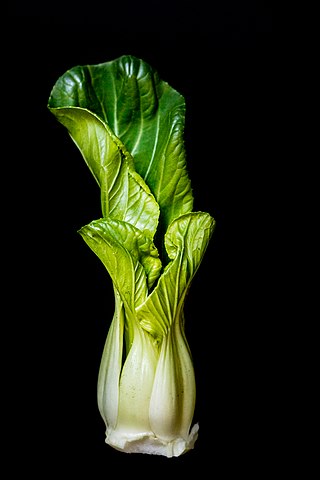This article's factual accuracy is disputed .(June 2019) |
This article needs additional citations for verification .(June 2019) |
The word "turnip" can refer to any of the following four vegetables:
This article's factual accuracy is disputed .(June 2019) |
This article needs additional citations for verification .(June 2019) |
The word "turnip" can refer to any of the following four vegetables:
This section is missing information about the regional nomenclatures of these four vegetables.(March 2021) |
Regional differences in terminology are summarised in the table below.
| Scientific name |  Brassica rapa rapa |  Brassica napus or B. napobrassica |  Pachyrhizus |  Raphanus sativus var. longipinnatus |
|---|---|---|---|---|
| Southern England, South Yorkshire, most Commonwealth countries | turnip | swede (from "swedish turnip") | yam | mooli |
| Scotland, northern England, Ireland, Isle of Man | white turnip | turnip, yellow turnip or "neep" | yam | mooli |
| Cornwall | turnip | turnip | mooli | |
| United States | turnip | rutabaga or yellow turnip | jicama | daikon |
| Malaysia, Singapore, Philippines | turnip | chai tow, chai tau (Hokkien and Teochew: 菜頭) | ||
| Hong Kong | turnip; [1] lobak, lo pak (Cantonese: 蘿蔔) | |||
| also called | white turnip or summer turnip | yellow turnip or winter turnip | sweet turnip |
Brassica napus and B. napobrassica are mostly called swedes (a shortening of Swedish turnip) in England, especially in the South, and in most dialects of the Commonwealth. Rutabaga, from the Swedish rotabagga, for "root bag" is mostly used in North America, in the United States and some parts of Canada. The rutabaga or swede differs from the turnip (Brassica rapa) in that it is typically larger and yellow-orange rather than white. In the Canadian provinces of Ontario, Newfoundland and Labrador and Atlantic Canada, the yellow-fleshed variety are referred to as "turnips", whilst the white-fleshed variety are called "white turnips".[ citation needed ]
However, in some dialects of British English the two vegetables have overlapping or reversed names: in the north of England and Scotland, the larger, yellow variety may be called "yellow turnip" or "neep", while the smaller white variety are called "swede" or "white turnip". The yellow-fleshed type are known as "narkies" in Sunderland, and in past years used to be hollowed out and used as lanterns at Halloween, [2] as was the case in Scotland, before the acceptance of the American-style Halloween pumpkin. In the Isle of Man, Turnips are still used for Halloween (‘Hop Tu Naa’) lanterns, in place of pumpkins.
Kohlrabi is also called German turnip, turnip cabbage or cabbage turnip, [3] although there the stem, not the root, is the enlarged part.

Kohlrabi, also called German turnip or turnip cabbage, is a biennial vegetable, a low, stout cultivar of wild cabbage. It is a cultivar of the same species as cabbage, broccoli, cauliflower, kale, Brussels sprouts, collard greens, Savoy cabbage, and gai lan.

The turnip or white turnip is a root vegetable commonly grown in temperate climates worldwide for its white, fleshy taproot. Small, tender varieties are grown for human consumption, while larger varieties are grown as feed for livestock. The name turnip – used in many regions – may also be used to refer to rutabaga, which is a different but related vegetable.

Cabbage, comprising several cultivars of Brassica oleracea, is a leafy green, red (purple), or white biennial plant grown as an annual vegetable crop for its dense-leaved heads. It is descended from the wild cabbage, and belongs to the "cole crops" or brassicas, meaning it is closely related to broccoli and cauliflower ; Brussels sprouts ; and Savoy cabbage.

Brassica is a genus of plants in the cabbage and mustard family (Brassicaceae). The members of the genus are informally known as cruciferous vegetables, cabbages, mustard plants, or simply brassicas. Crops from this genus are sometimes called cole crops—derived from the Latin caulis, denoting the stem or stalk of a plant.

Rutabaga or swede is a root vegetable, a form of Brassica napus. Other names include Swedish turnip, neep (Scots), and turnip. However, elsewhere, the name "turnip" usually refers to the related white turnip. The species Brassica napus originated as a hybrid between the cabbage and the turnip. Rutabaga roots are eaten as human food in various ways, and the leaves can be eaten as a leaf vegetable. The roots and tops are also used for livestock, fed directly in the winter or foraged in the field during the other seasons. Scotland, Northern and Western England, Wales, the Isle of Man, and Ireland had a tradition of carving the roots into Jack-o'-lanterns at Halloween.

A jack-o'-lantern is a carved lantern, most commonly made from a pumpkin, or formerly a root vegetable such as a mangelwurzel, rutabaga or turnip. Jack-o'-lanterns are associated with the Halloween holiday. Its name comes from the phenomenon of strange lights flickering over peat bogs, called jack-o'-lanterns. It is suggested that the name also has ties to the Irish legend of Stingy Jack, a drunkard who bargains with Satan and is doomed to roam the Earth with only a hollowed turnip to light his way.

Rapeseed, also known as rape and oilseed rape, is a bright-yellow flowering member of the family Brassicaceae, cultivated mainly for its oil-rich seed, which naturally contains appreciable amounts of mildly toxic erucic acid. The term "canola" denotes a group of rapeseed cultivars that were bred to have very low levels of erucic acid and which are especially prized for use as human and animal food. Rapeseed is the third-largest source of vegetable oil and the second-largest source of protein meal in the world.

Mangelwurzel or mangold wurzel, also called mangold, mangel beet, field beet, fodder beet and (archaic) root of scarcity, is a cultivated root vegetable. It is a variety of Beta vulgaris, the same species that also contains the red beet (beetroot) and sugar beet varieties. The cultivar group is named Crassa Group. Their large white, yellow or orange-yellow swollen roots were developed in the 18th century as a fodder crop for feeding livestock.

Kale, also called leaf cabbage, belongs to a group of cabbage cultivars primarily grown for their edible leaves; it has also been used as an ornamental plant.

Chinese cabbage is either of two cultivar groups of leaf vegetables often used in Chinese cuisine: the Pekinensis Group and the Chinensis Group.

Rapini is a green cruciferous vegetable, with the leaves, buds, and stems all being edible; the buds somewhat resemble broccoli. Rapini is known for its bitter taste, and is particularly associated with Mediterranean cuisine. It is a particularly rich dietary source of vitamin K.

Bok choy, pak choi or pok choi is a type of Chinese cabbage cultivated as a leaf vegetable to be used as food. Varieties do not form heads and have green leaf blades with lighter bulbous bottoms instead, forming a cluster reminiscent of mustard greens. Its flavor is described as being between spinach and water chestnuts but slightly sweeter, with a mildly peppery undertone. The green leaves have a stronger flavor than the white bulb.

Choy sum is a leafy vegetable commonly used in Chinese cuisine. It is a member of the genus Brassica of the mustard family, Brassicaceae. Choy sum is a transliteration of the Cantonese name, which can be literally translated as "heart of the vegetable". Choy sum is also called yu choy. It is also known as Chinese flowering cabbage.

Brassica rapa is a plant species that has been widely cultivated into many forms, including the turnip, komatsuna, napa cabbage, bomdong, bok choy, and rapini.

Clubroot is a common disease of cabbages, broccoli, cauliflower, Brussels sprouts, radishes, turnips, stocks, wallflowers and other plants of the family Brassicaceae (Cruciferae). It is caused by Plasmodiophora brassicae, which was once considered a slime mold but is now put in the group Phytomyxea. It is the first phytomyxean for which the genome has been sequenced. It has as many as thirteen races. Gall formation or distortion takes place on latent roots and gives the shape of a club or spindle. In the cabbage such attacks on the roots cause undeveloped heads or a failure to head at all, followed often by decline in vigor or by death. It is an important disease, affecting an estimated 10% of the total cultured area worldwide.

Hyaloperonospora brassicae, in the family Peronosporaceae, is a plant pathogen. It causes downy mildew of species of Brassica, Raphanus, Sinapis and probably other genera within the Brassicaceae. In the past, the cause of downy mildew in any plant in the family Brassicaceae was considered to be a single species Peronospora parasitica. However, this has recently been shown to be a complex of species with narrower host ranges, now classified in the genus Hyaloperonospora, for example Hyaloperonospora parasitica on the weed Capsella bursa-pastoris. From the perspective of plant pathology, Hyaloperonospora brassicae is now the name of the most important pathogen in this complex, attacking the major agricultural and horticultural Brassica species. Other significant Brassicaceous hosts are attacked by different species in the complex, e.g. horseradish by Hyaloperonospora cochleariae, wallflower by Hyaloperonospora cheiranthi.

Napa cabbage is a type of Chinese cabbage originating near the Beijing region of China that is widely used in East Asian cuisine. Since the 20th century, it has also become a widespread crop in Europe, the Americas, and Australia. In much of the world, it is referred to as "Chinese cabbage".

A pumpkin is a cultivated winter squash in the genus Cucurbita. The term is most commonly applied to round, orange-colored squash varieties, but does not possess a scientific definition. It may be used in reference to many different squashes of varied appearance and belonging to multiple species in the Cucurbita genus.